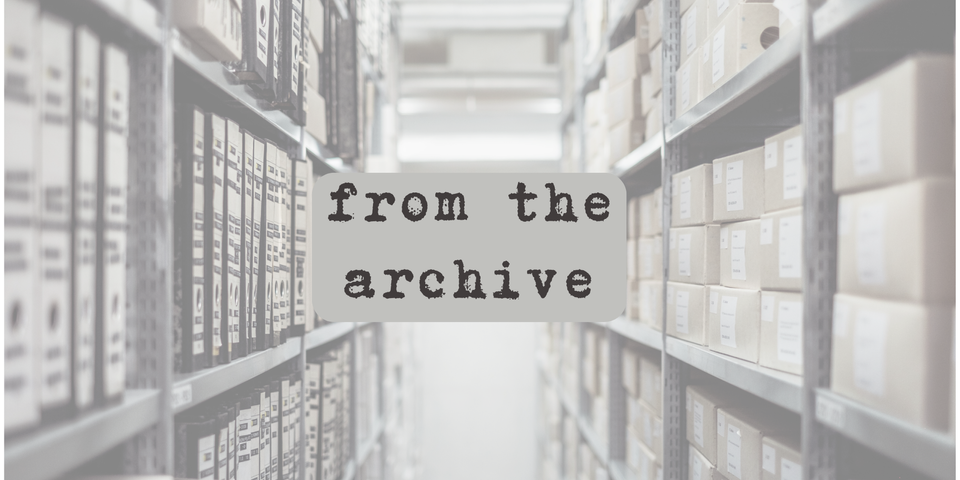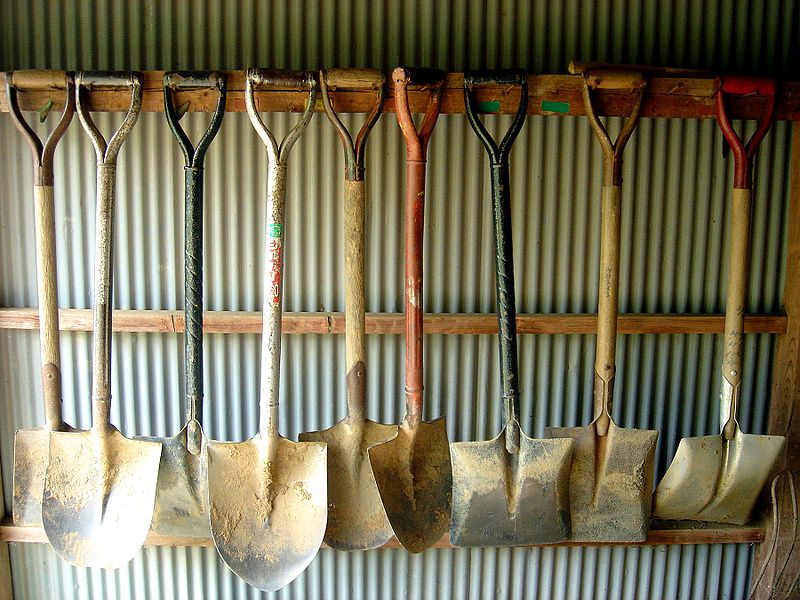Disabled kids excluded by design

[First published August 2023]
The wellbeing of children is often invoked by a variety of groups, from cookers freaking out about queers telling stories in libraries, to campaigners against kids in jail, to philanthropists urging policies to thrive by five.
But when it comes to disabled kids, the conversation becomes very different. Dozens of thinkpieces have emerged in the last year about the numbers of children getting individualised NDIS support, now at 11.5% of boys aged 5-7 years. Diagnosis criteria, doctor shopping, parents, female teachers - a myriad of factors are blamed with very little evidence.
At the same time, what is actually happening to disabled kids, particularly to First Nations kids, is utterly ignored. The expansion of expensive state systems to marginalise and punish those kids for being disabled doesn’t get a mention.
The NDIS Review has rightly flagged the large numbers of children in the NDIS as worthy of scrutiny - now half of all those getting NDIS supports. This week’s speeches from the NDIS Review panel flagged some big changes for those disabled kids, and a renewed focus on mainstream services, mostly delivered by state and territory governments.
These very state and territory governments that are locking up disabled kids, taking them from their families, suspending and excluding them from schools. Those governments.
This is what is meant by all the oasis in the desert, lifeboat in the ocean, whatever tortured metaphor you want to use. Disabled people are being sent over there, to the ‘special’ disabled place, rather than being included just like other citizens. And that’s what is actually not sustainable, including financially.
What’s happening?
I went back to the beginning of last year to look at the numbers of kids getting NDIS supports, and yes, there has been a rise over the last 18 months, from 9.1% to 11.5% of boys aged 5-7, not zero to 11.5%. There is a much lower number of girls getting individualised supports.
This, of course, is one of the five key questions of the NDIS Review, with the panel asking a bunch of good questions about whether the supports on offer through the NDIS are best delivered via individualised funding, and if other supports outside the NDIS are working or even exist at all.
This week saw a new set of research from Children and Young People with Disability Australia which would seem to answer that question strongly in the negative. Disabled kids and families reported huge amounts of discrimination and exclusion from school, and that isn’t changing.
Kids are being treated in isolation to their families, and one of the few interventions on offer are these intensive therapies that are leaving some children with more time doing therapies than at school. But this is also the only supports on offer, so until more or different supports exist outside the NDIS, more families are going to push to get individualised funding for their children.
Mainstream exclusion
Professor Bonyhady talked about how disability for kids is mainstream, and yet so many mainstream services actively work to exclude them.
He said in his speech last week that:
based on the Nationally Consistently Collected Dataset, 20 per cent of children experience learning difficulties, developmental concerns, developmental delay or are found to have disabilities. In other words, learning difficulties and disability are mainstream issues. This is why we are emphasising the needs of children, as part of our proposed reforms to foundational supports.
Prof Bonyhady wants to see identification of disability when kids are going for check ups and vaccinations, and services and supports available outside the NDIS.
But at the moment, those services and supports, mostly provided by state and territory, and local governments, don’t exist, or have been closed down. And those that do exist actively work to exclude or marginalise disabled kids, particularly First Nations kids.
The key missing pieces here are the same as for other disabled people - the lack of equitable access to fair public services, in this case those provided by state and territory governments.
For disabled kids, this is the education system and the family policing (child protection) system, but also out of home care. In these systems, disabled kids are seen as the problem, rather than as equal to other children in those systems. Disabled kids are sent off to do more and more individualised therapies via the NDIS, removed from their families and suspended from school. None of this tackles the barriers created by those systems.
For state and territory governments, education and family policing systems, as well as the justice and prison systems, are some of the biggest costs of services costing billions every year. So why are those governments baking in these exclusionary policies that will only inflate these costs?
School exclusion
In education, the increased number of kids needing extra support when they start school show that there is a problem. What is it about this vital transition to a new environment, and the years preceding that, that aren’t working for these kids?
The Mindaroo Thrive by Five initiative recently held a forum to ask these questions, showing videos from disabled people and of early learning centres where inclusion from the beginning is happening and hearing from Minister Shorten.
The data about this is clear and unambiguous - including disabled kids in mainstream early learning services is good for them, for their families and gets them ready for school. And yet, there remains far too much exclusion from these kinds of essential services.
The challenge of getting changes that will fix this exclusion were laid bare this week with the decision to re-introduce a punishment system for kids with disability and First Nations kids.
The new ALP NSW Government backflipped on the promised wage rise for teachers, infuriating those who had been some of the strongest campaigners for them during the recent state election.
Teachers started picketing the Premier’s office, as well as other MPs, bombarding social media and electorate offices.
The previous state government in NSW had started to listen to the clear evidence that suspensions and expulsions were being used overwhelmingly on disabled and First Nations kids, and announced some small changes.
The impact of being removed from school on disabled and First Nations kids is huge, leading to the low rates of finishing their education, and increasing the chances they will go to prison.
But now the NSW Government has increased the punishment of disabled and First Nations kids, much to the dismay of disability advocacy groups Family Advocacy and Children and Young People with Disability, who said “The government’s announcement strongly highlights the practice of scapegoating students whilst evading the responsibility of NSW public schools to do better.”
Indeed.
Family policing
For kids with disability from marginalised families, particularly First Nations families, this exclusion at school happens, but with the added spectre of the family policing system. When families ask for support for kids with disability, child protection is often called, leading to those children being removed because they don’t have disability support.
Barriers to accessing those supports, including poverty, are viewed by the family policing system as a failure of those individual parents and families. So instead of supporting families to work through the complexity of the NDIS and to access enough support, kids are taken from them. Those kids are then accessing the NDIS away from their families, with little to no acknowledgement of the trauma caused by taken them away.
Research commissioned by the Disability Royal Commission found that:
The invisibility of the disability experience within the [child protection] system is reflective of the broader attitudes towards disability within the Australian community, in which disability is viewed at best patronisingly, but more likely and awkward topic of discussion. This social positioning of disability emerged in this study through the testimonies of the participants from the community sector who spoke of a narrative of shame and avoidance when it comes to children with disability.
So how is anything the NDIS Review is promising, in terms of early identification of disabled kids, going to deliver access to services, when this is a pathway into the family policing system for so many kids?
How are families supposed to trust mainstream services who are already reporting them to the family policing system when they try to get support for their disabled kids? Even my most optimistic self can’t help but see a huge big pipeline to more disabled and First Nations children being taken from their families.
We’re in this together
The challenge the NDIS Review faces is large, but Professor Bonyhady belled the cat this week when he highlighted what needs to change, and that the exclusion of disabled people has to end.
The problem is that the very mainstream services that the Review wants to do more for disabled people are structured in such a way as to leave us out, to push us aside, to actively make sure we aren’t included.
These systems that are designed to exclude disabled folks are not the ones that are interested in our inclusion. Acknowledging that fact will be vital to putting the levers in place to ensure that they have to.
I was asked in a workshop this week how to get states and territories to act, and I replied, money. The Federal Government has it, and the states and territories want it. Tie funds to actual change, and withhold money from systems that don’t shift. And put disabled people in charge of how this is done.
We are paying the price of all this exclusion, so let us be the ones to design our own inclusion.
